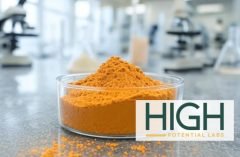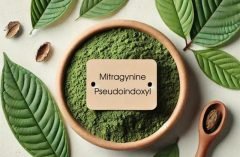Table of Contents [show]

Interest in 7-OH tablets has grown rapidly in recent years as researchers continue to study their effects on human health. These tablets have caught the attention of medical professionals and health enthusiasts alike. This post breaks down what 7-OH tablets are, how they work, and what benefits they might offer based on current scientific understanding.
What are 7-OH Tablets? A Definition and Historical Overview
7-OH tablets contain 7-Hydroxymitragynine, a naturally occurring alkaloid compound primarily found in the Mitragyna speciosa plant, commonly known as kratom. This compound is one of the most potent active ingredients in kratom leaves.
The isolation and study of 7-hydroxymitragynine began in the 1990s, when Japanese researchers first identified its unique properties. Traditional communities in Southeast Asia have used kratom for centuries, but the specific extraction and concentration of 7-OH into tablet form represent a modern development.
These tablets have gained attention because 7-Hydroxymitragynine shows distinct pharmacological properties that differ from other compounds in the plant. Scientists have noted its potential applications in pain management and mood regulation, prompting further investigation into its therapeutic value.
Scientific Background Behind 7-OH Tablets
7-Hydroxymitragynine works primarily by interacting with the body’s opioid receptors, particularly the mu-opioid receptors. But unlike traditional opioids, it functions as a partial agonist, which may explain its different side effect profile.
The compound has a complex molecular structure that allows it to cross the blood-brain barrier effectively. Once in the central nervous system, it modulates pain perception and can affect mood regulation pathways.
Research published in the Journal of Medicinal Chemistry has shown that 7-Hydroxymitragynine is approximately 13 times more potent than morphine in certain analgesic tests. This potency, combined with its partial agonist activity, has made it a compound of significant research interest.
Recent studies have also examined how 7-OH interacts with other neurotransmitter systems beyond opioid pathways, including adrenergic and serotonergic systems, which may contribute to its reported effects on mood and energy levels.
Medical Uses and Clinical Applications
The primary clinical application being researched for 7-OH tablets is pain management. Several small-scale studies suggest effectiveness for both acute and chronic pain conditions, though large clinical trials remain limited.
Some medical professionals have begun exploring 7-OH tablets as a potential tool for opioid withdrawal management. Early research indicates it might help ease withdrawal symptoms while presenting a lower risk of respiratory depression than conventional opioids.
Another area of investigation involves mood disorders. Preliminary research suggests 7-OH may have anxiolytic (anxiety-reducing) and antidepressant-like effects, though these findings require further validation through controlled clinical trials.
It’s worth noting that 7-OH tablets are not yet FDA-approved for any specific medical condition. Most current applications remain investigational or off-label, and treatment protocols vary widely among practitioners who work with these compounds.
Potential Health Benefits
Pain relief stands as the most documented benefit of 7-OH tablets. Users and preliminary studies report effectiveness against various pain types, from neuropathic to inflammatory conditions.
Many users report improved mood and reduced anxiety when taking 7-OH tablets. These effects likely stem from the compound’s interaction with brain receptors involved in mood regulation.
Some research suggests this marvelous solution may help with focus and concentration. This cognitive effect differs from stimulants and may result from its complex interaction with multiple neurotransmitter systems.
Another reported benefit involves sleep quality improvement. While seemingly contradictory to its focus-enhancing effects, this dual action might relate to its dose-dependent properties and ability to help regulate the body’s stress response.
Compared to conventional pain medications, these tablets may offer advantages for some users. They appear less likely to cause severe respiratory depression than full opioid agonists, though this doesn’t mean they’re without risks.
Safety, Side Effects, and Considerations
Common side effects of 7-OH tablets include nausea, constipation, dry mouth, and occasional dizziness. These typically occur at higher doses or in new users.
More serious concerns involve the potential for dependence and withdrawal. While different from traditional opioids, 7-OH can still lead to physical dependence with regular use, particularly at higher doses.
Drug interactions pose another safety consideration. 7-OH tablets may interact with medications metabolized by the same liver enzymes, including many psychiatric drugs, anticoagulants, and some antibiotics.
People with liver or kidney conditions should approach 7-OH tablets with caution, as these organs handle the metabolism and elimination of the compound. Reduced organ function could lead to accumulation and increased side effects.
And while 7-OH appears to have a better safety profile than full opioid agonists regarding respiratory depression, this risk isn’t eliminated entirely, especially when combined with other substances that suppress breathing.
Frequently Asked Questions about 7-OH Tablets
What’s the typical dosage?
Dosing varies widely based on the specific product concentration and individual factors. Most clinical investigations start with very low doses (1-2mg of pure 7-hydroxymitragynine) and adjust based on response. Commercial products vary significantly in concentration, making standardized dosing recommendations difficult.
How long do the effects last?
The effects typically last 4-6 hours, though this can vary based on metabolism, dosage, and whether the tablets are taken with food. The compound has a half-life of approximately 2.5-3 hours in most individuals.
Are 7-OH tablets legal?
The legal status varies by country and even by state or region within countries. In the United States, kratom (the plant source of 7-OH) faces different regulations across states, while pure 7-hydroxymitragynine exists in a regulatory gray area in many places. Always check local laws before purchasing or using these products.
Can 7-OH tablets appear on drug tests?
Standard drug panels don’t typically test for 7-hydroxymitragynine. However, specialized tests can detect it, and some advanced panels now include kratom alkaloids. If drug testing is a concern, discuss this with the testing authority.
Conclusion: Future Prospects and Final Thoughts on 7-OH Tablets
7-OH tablets represent an emerging area of interest at the intersection of traditional plant medicine and modern pharmacology. Their unique mechanism of action offers potential advantages over existing treatments for pain and mood disorders.
Research into 7-OH continues to expand, with several universities and pharmaceutical companies investigating its properties. Future developments may include standardized medical formulations with consistent dosing and improved safety profiles.
If you’re considering 7-OH tablets for any health condition, consult with a healthcare provider knowledgeable about these compounds. They can help evaluate whether this option makes sense for your specific situation and how to approach it safely.
The field surrounding 7-OH tablets is evolving rapidly. Stay informed about new research findings and regulatory changes that may affect their availability and recommended use. As with any emerging treatment, a balanced approach that considers both potential benefits and risks will serve you best.
More in Spinfuel:
How to Identify Trustworthy Kratom Vendors Online: A 2023 Guide




